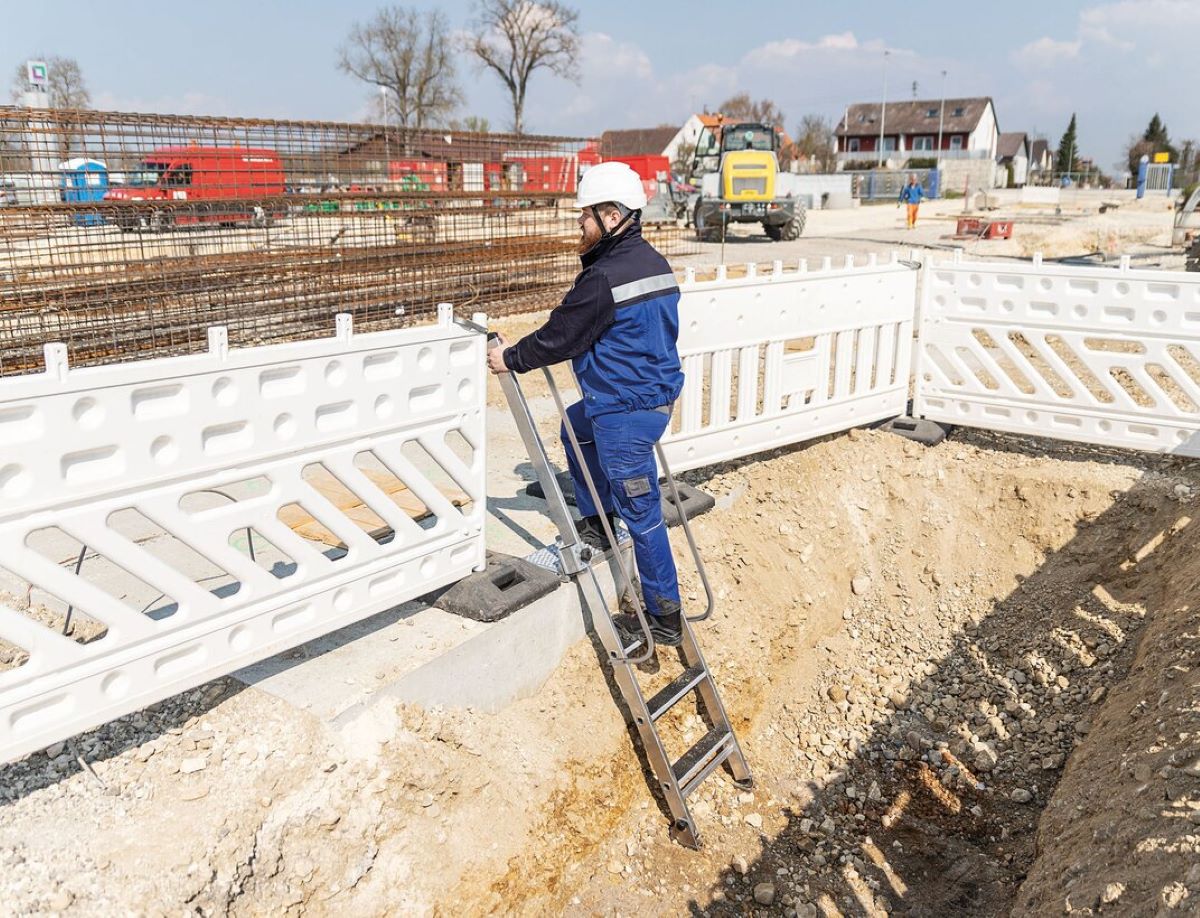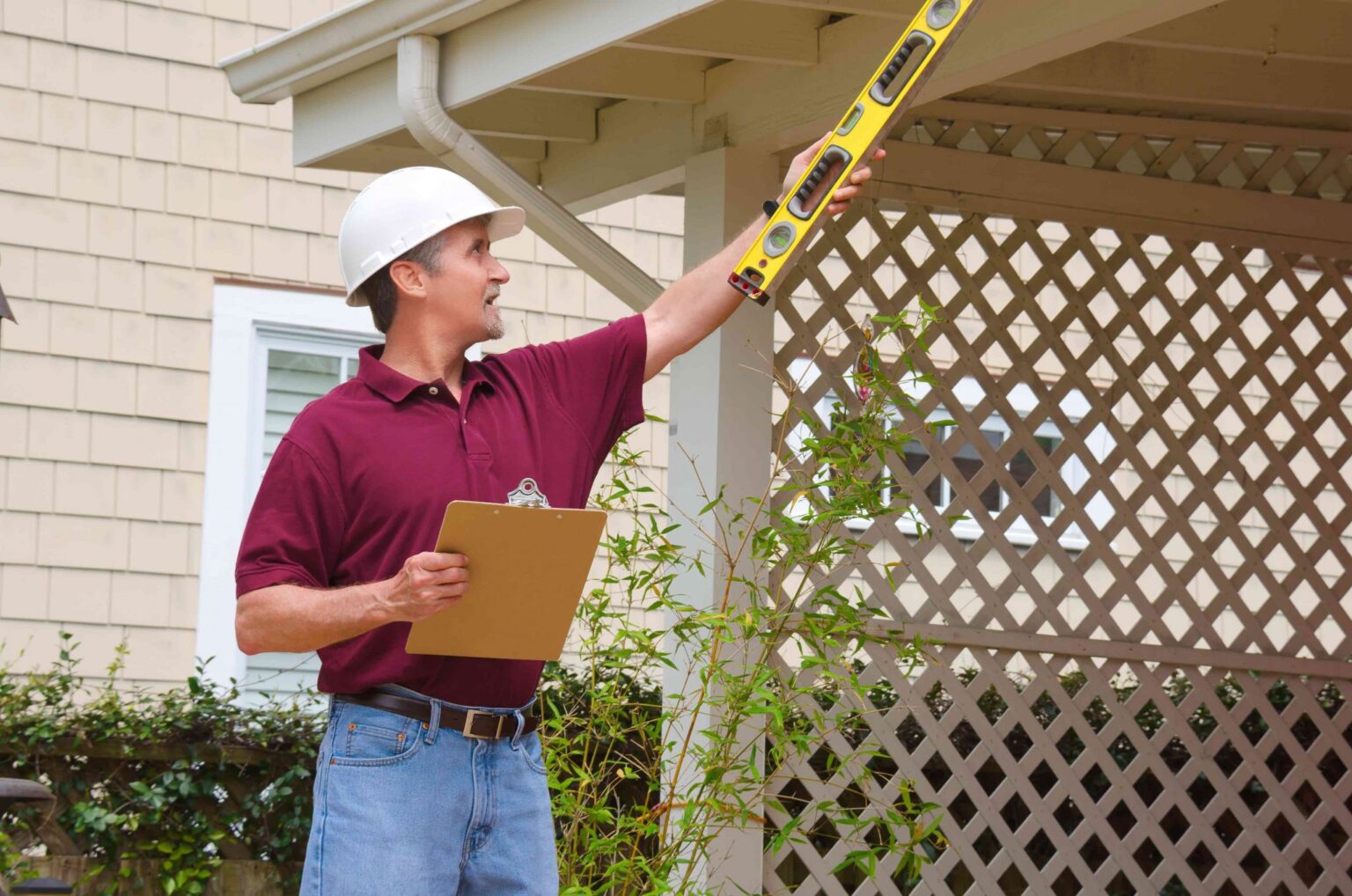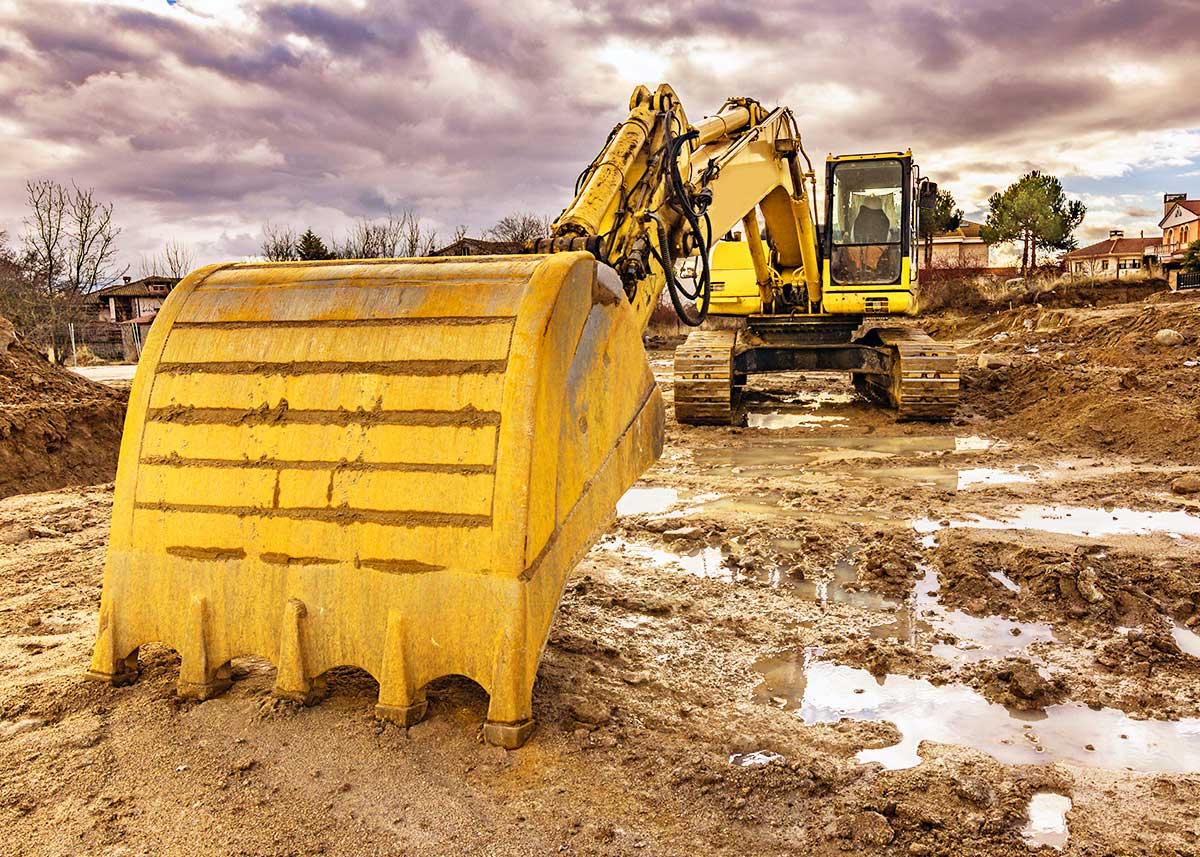

Articles
When Is A Ladder Required In An Excavation
Modified: May 6, 2024
Discover when a ladder is needed in an excavation and stay informed with our informative articles on excavation safety.
(Many of the links in this article redirect to a specific reviewed product. Your purchase of these products through affiliate links helps to generate commission for Storables.com, at no extra cost. Learn more)
Introduction
Excavations are a common part of many construction projects, whether it’s for building foundations, utility installations, or landscaping purposes. However, working in excavations can be dangerous if proper safety precautions are not taken. One of the key safety measures that need to be considered is the requirement for a ladder in an excavation.
Ladders play a crucial role in providing safe access and egress for workers in excavations. They enable workers to climb in and out of the excavation safely, preventing potential accidents and injuries. Understanding when a ladder is required in an excavation is essential to ensure the well-being of workers and compliance with Occupational Safety and Health Administration (OSHA) guidelines.
Key Takeaways:
- Prioritizing ladder requirements in excavations is crucial for maintaining a safe working environment and minimizing workplace accidents. Employers should assess the specific conditions of each excavation project and provide the necessary ladder access.
- Proper training and certification for ladder use in excavations are essential to ensure worker competence and compliance with safety regulations. This investment in training improves worker safety and enhances overall project efficiency.
Definition of an Excavation
An excavation refers to the process of digging or removing earth, soil, or other materials from the ground for various purposes such as construction, mining, or archaeological explorations. Excavations can range from small and shallow holes to deep trenches or pits depending on the project requirements.
Excavations are commonly carried out to create foundations for buildings, install underground utility lines, or create pathways for drainage systems. The process involves using heavy equipment like excavators, bulldozers, or manual labor such as shovels and picks to remove the desired material.
The size and depth of the excavation depend on the specific project requirements and can vary significantly. Prior planning and surveying are essential to ensure the excavation is performed safely and efficiently.
The Importance of Ladder Requirement
The requirement for a ladder in an excavation is crucial for ensuring the safety and well-being of workers. Excavations can pose various hazards such as unstable soil, collapsing walls, and the risk of falls. Without a proper means of access and egress, workers may be at a higher risk of accidents and injuries.
Ladders provide a safe and stable way for workers to enter and exit excavations. They enable workers to climb up and down the walls of the excavation without relying on makeshift or unsafe methods. Ladders also help workers maintain their balance and stability while working at higher levels, reducing the risk of falls.
Furthermore, the use of ladders in excavations improves the efficiency of the work. With a ladder in place, workers can quickly and easily navigate the excavation, saving time and effort. This leads to increased productivity and improved project timelines.
OSHA Guidelines for Ladder Use in Excavations
The Occupational Safety and Health Administration (OSHA) has established guidelines for the safe use of ladders in excavations. These guidelines are designed to protect workers and ensure compliance with safety standards. Here are some key OSHA guidelines regarding ladder use in excavations:
- Ladder Selection: OSHA requires that employers select and provide ladders that are appropriate for the specific type of excavation. Ladders should be made of non-conductive materials and capable of supporting the weight of workers.
- Secure Placement: Ladders should be securely placed to prevent movement or slipping. They should be set up on stable ground and not leaning against unstable surfaces or materials.
- Proper Angle: Ladders should be set up at a safe angle to ensure stability. The recommended angle is one foot of ladder out for every four feet of vertical height. This helps prevent the ladder from tipping over.
- Inspection and Maintenance: Employers should regularly inspect ladders for any defects, damage, or wear. If any issues are found, the ladder should be taken out of service and replaced or repaired.
- Clear Pathway: Ladders should have a clear pathway to the excavation, free from any obstructions or debris. This ensures that workers can easily access and exit the excavation without any hindrance or risk of tripping.
These OSHA guidelines are designed to ensure the safe use of ladders in excavations and minimize the risk of accidents and injuries. It is essential for employers and workers to be aware of these guidelines and implement them in their excavation projects.
Factors Determining the Need for a Ladder in Excavations
Several factors play a role in determining whether a ladder is needed in excavations. Understanding these factors is crucial in ensuring the safety of workers and compliance with safety regulations. Here are some key factors that influence the need for a ladder in an excavation:
- Depth and Height: The depth and height of the excavation are significant factors in determining the need for a ladder. If the excavation is deep enough that workers cannot climb in and out without assistance, a ladder is typically required.
- Accessibility: The accessibility of the excavation site is another factor to consider. If the excavation is located in an area where workers cannot easily enter or exit without a ladder, then a ladder is necessary to ensure safe access.
- Duration of Work: The duration of work in the excavation is another consideration. If workers need to frequently enter and exit the excavation, a ladder becomes essential for their safety and efficiency.
- Frequency of Use: If the excavation is going to be frequently used by multiple workers throughout the project, a ladder may be necessary to accommodate the traffic flow and ensure smooth operations.
- Nature of Work: The nature of the work being performed in the excavation also influences the need for a ladder. If the work requires workers to reach heights or access certain areas within the excavation, a ladder will be necessary for safe and efficient execution.
It is important to assess these factors before deciding on the need for a ladder in an excavation. Failure to provide a ladder when it is necessary can lead to accidents, injuries, and potential legal consequences. Consulting with safety professionals and adhering to relevant guidelines and regulations can help ensure the appropriate use of ladders in excavations.
A ladder is required in an excavation when the depth is 4 feet or more. It should be placed within 25 feet of all workers and must extend 3 feet above the landing surface.
Read more: When Is A Cage Required On A Fixed Ladder
Conditions Where a Ladder is Required in Excavations
There are specific conditions in which a ladder is required in excavations to ensure the safety of workers. Here are some common scenarios where the use of a ladder becomes necessary:
- Deep Excavations: In excavations that are deep, workers will require a ladder to safely descend into and ascend from the excavation. A ladder provides a stable and secure means of access and exit, reducing the risk of falls or injury.
- Vertical Walls: Excavations with vertical walls can be challenging to enter and exit without a ladder. The use of a ladder helps workers navigate the steep incline and maintain their balance while climbing in and out of the excavation.
- Narrow Excavations: If the excavation is narrow and does not provide enough space for workers to comfortably climb in and out, a ladder is needed. It allows for vertical movement within the confined space, ensuring safe access and egress.
- Unstable Soil: In cases where the soil in the excavation is loose or unstable, using a ladder becomes essential. It provides workers with a secure structure to hold onto while maneuvering in the excavation, reducing the risk of soil collapse or sliding.
- Extended Duration of Work: If workers need to spend an extended period working in the excavation, a ladder is required to ensure their comfort and safety. It provides a stable platform where workers can rest or temporarily store tools and equipment.
In these conditions, the presence of a ladder is essential to maintain a safe working environment and comply with safety regulations. Employers must assess the specific conditions of the excavation and provide appropriate ladder access to protect the well-being of their workers.
Alternatives to Ladders in Excavations
While ladders are commonly used in excavations for safe access and egress, there may be situations where ladders are not the most suitable option or may pose additional risks. In such cases, alternative methods can be considered. Here are some alternatives to ladders in excavations:
- Ramps: Ramps can be used as an alternative to ladders in excavations, especially when the excavation is wide and shallow. Ramps provide a gradual incline for workers to walk up and down, making it easier to transport tools and equipment.
- Stairs: For larger excavations or long-term projects, installing temporary staircases might be a more practical option. Stairs offer a safe and stable means of moving between different levels of the excavation, reducing the risk of slips and falls.
- Sloping Entries: In some cases, it may be feasible to create a sloping entry or exit point in the excavation instead of using a ladder. This allows workers to walk down or up the slope to access the excavation safely.
- Hoists or Cranes: In situations where the excavation is deep or vertical, hoists or cranes can be utilized to safely lift workers in and out of the excavation. These mechanical devices provide a controlled means of access and reduce the physical strain on workers.
- Staging or Platforms: Staging or platforms can be installed within the excavation to create a stable working area for workers. This allows them to move around the excavation without the need for constant climbing up and down a ladder.
When considering alternatives to ladders in excavations, it is important to assess the specific requirements of the project and ensure that the chosen method provides safe and efficient access for workers. Employers should consult with safety professionals and adhere to relevant regulations to determine the most suitable alternative for their excavation site.
Risk Factors and Hazards Without Using a Ladder in Excavations
Not using a ladder in excavations can pose significant risks and hazards to workers. Without a proper means of access and egress, workers may resort to unsafe methods or improvised solutions that increase the likelihood of accidents and injuries. Here are some risk factors and hazards that may arise when a ladder is not used in excavations:
- Falls: Workers may attempt to climb in or out of the excavation without proper support, leading to slips, trips, or falls. The risk of falls increases when working at heights or on unstable surfaces.
- Injuries: Without a ladder, workers may strain their muscles or suffer from musculoskeletal injuries while trying to climb or descend steep walls or inclines. The physical exertion required can be taxing and may result in strains, sprains, or other injuries.
- Soil Instability: Accidentally disturbing the soil while climbing without a ladder can cause destabilization and collapses. This can bury workers under loose soil or debris, resulting in serious injuries or even fatalities.
- Tripping Hazards: Workers navigating the excavation without a ladder may encounter tripping hazards such as obstacles, debris, or uneven surfaces. Tripping in the confined space of an excavation can lead to injuries and falls.
- Reduced Efficiency: Without a ladder, workers may spend more time and effort trying to access or exit the excavation, leading to reduced efficiency and productivity. This can impact project timelines and increase costs.
The absence of a ladder in excavations can compromise the safety, well-being, and productivity of workers. It is essential for employers to prioritize worker safety by providing the appropriate means of access and egress, such as ladders, to mitigate these risks and hazards.
Training and Certification for Ladder Use in Excavations
Proper training and certification are essential for workers who will be using ladders in excavations. This ensures that they have the necessary knowledge and skills to safely and effectively use ladders in accordance with safety regulations. Here are some key aspects of training and certification for ladder use in excavations:
- Safety Training: Workers should receive comprehensive safety training on ladder use in excavations. This training should cover topics such as ladder selection, ladder setup, proper climbing techniques, and hazard identification. It should also include information on the potential risks and hazards associated with ladder use in excavations and how to mitigate them.
- OSHA Compliance: Training should include an understanding of relevant OSHA regulations and guidelines for ladder use in excavations. Workers should be familiar with OSHA standards such as proper ladder angle, secure placement, inspection, and maintenance.
- Hands-on Practice: Practical hands-on training is crucial to allow workers to practice using ladders in excavations under supervision. This enables them to develop the necessary skills and confidence in safely climbing, descending, and moving around the excavation using ladders.
- Certification: Upon completion of ladder use training for excavations, workers should receive a certification or documentation verifying their competence in ladder use. This certification serves as proof that they have undergone proper training and are aware of the best practices for ladder safety in excavations.
- Refresher Training: Regular refresher training sessions should be provided to workers to ensure that their knowledge and skills regarding ladder use in excavations are updated. This helps reinforce safe practices and keeps workers informed about any changes in regulations or guidelines.
Employers have a responsibility to ensure that workers receive training and certification for ladder use in excavations. This investment in training not only improves worker safety but also enhances overall project efficiency and reduces the risk of accidents and injuries.
Read more: When Is Fall Protection Required On A Ladder
Conclusion
The requirement for a ladder in excavations plays a vital role in ensuring the safety and well-being of workers. Ladders provide a safe and stable means of access and egress, reducing the risk of accidents, falls, and injuries. Adhering to OSHA guidelines and considering factors such as depth, height, accessibility, and duration of work can help determine the need for a ladder in excavations.
While ladders are the most common method of accessing excavations, there are alternative options available such as ramps, stairs, sloping entries, hoists, and staging platforms. Evaluating the specific requirements of the excavation and choosing the most appropriate alternative is crucial to ensure safe and efficient access.
Not using a ladder in excavations can introduce a range of risks and hazards, including falls, injuries, soil instability, and reduced efficiency. Providing workers with proper training and certification in ladder use for excavations is essential to ensure their competence and compliance with safety regulations.
In conclusion, prioritizing ladder requirements in excavations is crucial for maintaining a safe working environment and minimizing workplace accidents. Employers should assess the specific conditions of each excavation project, provide the necessary ladder access, and ensure that workers receive the training and certification needed to safely use ladders in excavations. By doing so, they can create a secure and productive workplace for all workers involved in excavation activities.
Safety doesn't just stop once you climb out of an excavation. Ensuring everyone on a construction site stays safe is a day-to-day mission. If you found the ladder guidelines helpful, you'll definitely want to know more about broader safety measures. Our next piece sheds light on these essential strategies, emphasizing why vigilance and preventive practices are key to avoiding accidents and ensuring a secure working environment. Don't miss out on learning more about protecting yourself and your team; it's all about making every project a success without any setbacks.
Frequently Asked Questions about When Is A Ladder Required In An Excavation
Was this page helpful?
At Storables.com, we guarantee accurate and reliable information. Our content, validated by Expert Board Contributors, is crafted following stringent Editorial Policies. We're committed to providing you with well-researched, expert-backed insights for all your informational needs.














0 thoughts on “When Is A Ladder Required In An Excavation”